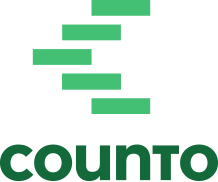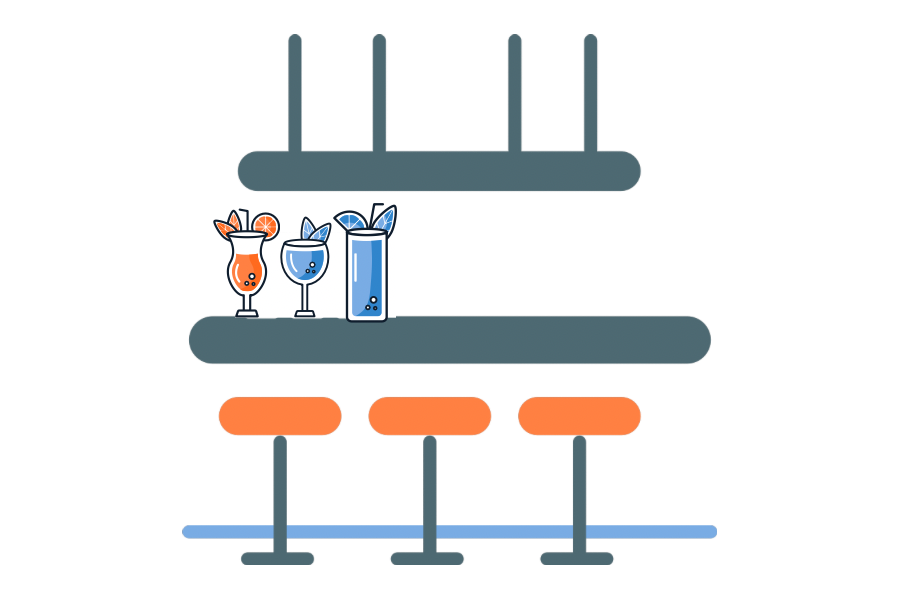Payroll Automation: Easing HR Administrative Burdens for Singapore SMEs
Managing payroll is a critical yet challenging task for small and medium-sized enterprises (SMEs) in Singapore. With payroll automation, businesses can streamline processes, reduce administrative burdens, and focus on strategic growth. Let’s explore how payroll automation can transform your HR operations.
1. Key Benefits of Payroll Automation for SMEs
1.1 Time Savings
- Efficiency in Operations: Automating repetitive tasks like data entry, calculations, and report generation streamlines payroll processing, allowing HR teams to complete payroll tasks more quickly.
- Strategic Focus: By cutting down on time-consuming routine tasks, HR teams can shift their focus towards strategic initiatives that contribute to business growth.
Example: A company previously spent 20 hours monthly on payroll tasks. With automation, this time has been reduced to just 5 hours, enabling the HR team to concentrate on employee development and strategic planning.
1.2 Reduced Errors
- Precision in Processing: Automated systems handle calculations and deductions with high accuracy, reducing the risk of human errors.
- Enhanced Reliability: Minimising manual data entry and calculations decreases the likelihood of payroll errors, ensuring that employees are paid correctly and on time.
Example: After implementing payroll automation, a business experienced fewer payroll discrepancies, leading to increased employee satisfaction and fewer disputes.
1.3 Enhanced Compliance
- Regulatory Adherence: Automation helps ensure compliance with Singapore’s CPF contributions and IRAS tax regulations by accurately calculating contributions and making timely submissions.
- Automatic Updates: Systems update automatically with changes in tax laws and contribution rates, reducing the need for manual tracking and oversight.
Example: An SME using automated payroll successfully navigated compliance with CPF regulations by ensuring accurate and timely submissions, avoiding potential penalties.
1.4 Integrated Systems
- Seamless Connections: Automated payroll solutions integrate smoothly with other HR systems, such as time tracking and benefits management, reducing manual data entry and enhancing data accuracy.
- Improved Data Accuracy: Integration ensures that data flows seamlessly between systems, reducing errors and improving overall payroll accuracy.
Example: Integration of payroll with time-tracking systems eliminated discrepancies between recorded hours and payroll, ensuring accurate employee pay and simplified reporting.
1.5 Employee Self-Service Portals
- Empowered Employees: Self-service features enable employees to view payslips, update personal information, and manage leave requests independently.
- Reduced HR Workload: This functionality decreases the number of routine inquiries directed to HR, allowing staff to focus on more complex issues.
Example: An SME’s self-service portal allowed employees to access their payslips and update their personal details, reducing HR’s workload and improving efficiency.
1.6 Real-Time Data Access
- Instant Insights: Automation provides real-time access to payroll data, facilitating quick decision-making and responses to payroll-related issues.
- Operational Efficiency: Immediate data access allows for timely adjustments and enhanced operational efficiency.
Example: Real-time access to payroll data enabled a company to promptly address payroll issues and make necessary adjustments, improving overall efficiency.
2. Compliance Challenges Simplified by Payroll Automation
2.1 Central Provident Fund (CPF) Contributions
- Accurate Calculations: Automation ensures CPF contributions are calculated correctly according to the latest rates, reducing the risk of underpayment or overpayment.
- Timely Submissions: Automated systems manage timely submissions of CPF contributions, avoiding late fees and ensuring compliance.
Example: By using automation, an SME ensured accurate CPF contributions and timely submissions, preventing costly penalties and maintaining compliance.
2.2 Income Tax Reporting to IRAS
- Auto-Inclusion Scheme (AIS): For employers in the AIS scheme, automation facilitates the accurate and timely transmission of employee income details to IRAS.
- Error Reduction: Automation minimises reporting errors, such as incorrect benefits-in-kind reporting, reducing the risk of significant penalties.
Example: Automated income reporting helped an SME comply with AIS requirements by accurately transmitting employee income details to IRAS, reducing reporting errors.
✅ Unlike other outsourced payroll providers that burden you with hefty fees, we prioritise your savings and efficiency. Our team of seasoned payroll professionals manages everything from salary slips to CPF and IR8A submissions at unbeatable rates. Elevate your payroll experience with us – contact us now to learn more!
2.3 Statutory Filings
- Efficient Filing: Automated systems integrate with platforms like ACRA’s BizFile+ and IRAS’ myTax Portal, streamlining the filing of corporate income tax returns and annual returns.
- Up-to-Date Compliance: Automation ensures payroll processes are updated in real-time with changes in tax laws, minimising manual oversight.
Example: Integration with ACRA’s BizFile+ and IRAS’ myTax Portal facilitated seamless filing for an SME, reducing administrative burdens and ensuring timely compliance.
2.4 Record-Keeping and Audit Preparedness
- Detailed Documentation: Automated systems maintain comprehensive records of payroll transactions, aiding in audit preparation and ensuring transparency.
- Data Security: Automation ensures secure storage of sensitive employee information, addressing data protection regulations and reducing the risk of breaches.
Example: Comprehensive records maintained by an automated system helped an SME prepare efficiently for audits and ensured secure storage of sensitive data.
3. Common Challenges in Implementing Payroll Automation
3.1 Data Accuracy and Migration
- Ensuring Accuracy: Proper data cleaning and validation before migrating to a new system are essential to avoid errors and compliance issues.
- Data Cleaning: Thorough checks and corrections ensure smooth migration and accurate payroll processing.
Example: An SME invested time in data validation before migrating, resulting in a smooth transition to automation and accurate payroll processing.
3.2 Integration with Existing Systems
- Compatibility: Ensuring new payroll systems integrate with existing HR, accounting, and time-tracking systems can be complex and may require customisation.
- Data Silos: Proper integration avoids data silos and reduces manual data entry.
Example: Customising the integration of the new payroll system with existing time-tracking software helped an SME streamline operations and avoid data inconsistencies.
3.3 User Training and Adoption
- Effective Training: Comprehensive training is crucial for successful adoption of new payroll systems and overcoming resistance to change.
- Smooth Transition: Addressing user concerns and providing adequate training helps facilitate a smoother transition.
Example: Detailed training sessions for HR staff and employees eased the adoption of the new payroll system, minimising resistance and ensuring effective use.
3.4 Cost of Implementation
- Initial Investment: While automation can lead to long-term savings, the initial costs for software, training, and system upgrades can be substantial.
- Budget Constraints: SMEs may face challenges in allocating sufficient budget for these upfront expenses.
Example: Despite the initial costs, an SME justified the investment in payroll automation by calculating the long-term savings from reduced errors and increased efficiency.
3.5 Security Concerns
- Protecting Data: Ensuring robust security measures to protect payroll data from cyber threats is crucial.
- Compliance with Regulations: Implementing security protocols helps maintain data protection compliance.
Example: An SME implemented advanced security measures to safeguard payroll data, addressing potential cyber threats and maintaining data protection standards.
3.6 Customisation Needs
- Tailoring Solutions: Customising payroll solutions to meet unique organisational requirements may be necessary but can complicate implementation.
- Meeting Needs: Finding a solution that fits specific needs requires careful consideration and possibly additional customisation.
Example: An SME opted for a customisable payroll solution to meet its unique needs, ensuring the system fully supported its payroll processes despite added complexity.
3.7 Ongoing Maintenance and Support
- Support Requirements: Continuous support is necessary for troubleshooting, updates, and training.
- Operational Disruptions: Lack of ongoing support can lead to disruptions and inefficiencies.
Example: An SME established a support agreement with its payroll software provider to ensure ongoing assistance and minimise operational disruptions.
Summary
Payroll automation offers significant benefits to SMEs in Singapore by reducing administrative burdens and ensuring compliance with CPF and IRAS regulations. While challenges exist in implementing these systems, understanding and addressing them can lead to smoother transitions and long-term advantages. By embracing payroll automation, SMEs can enhance efficiency, accuracy, and compliance while focusing on strategic growth and operational success.
Try Counto’s reliable Payroll Service
If you’re looking for a modern payroll provider, Counto is an excellent option. Our payroll service comes with an advance bill payment and spend management software, offering AI-backed smart tools other providers can’t provide. To learn more, speak to us directly on our chatbot, email [email protected], or use our contact form to get started.
Here are some articles you might find helpful:







